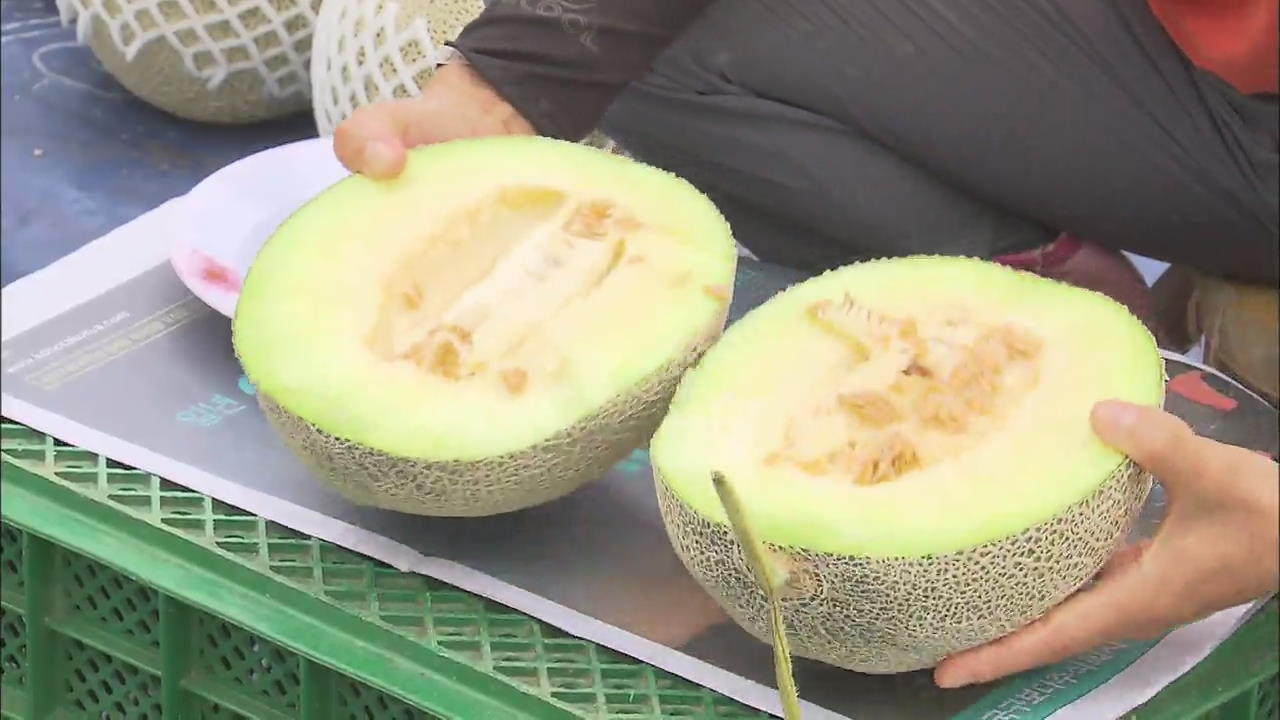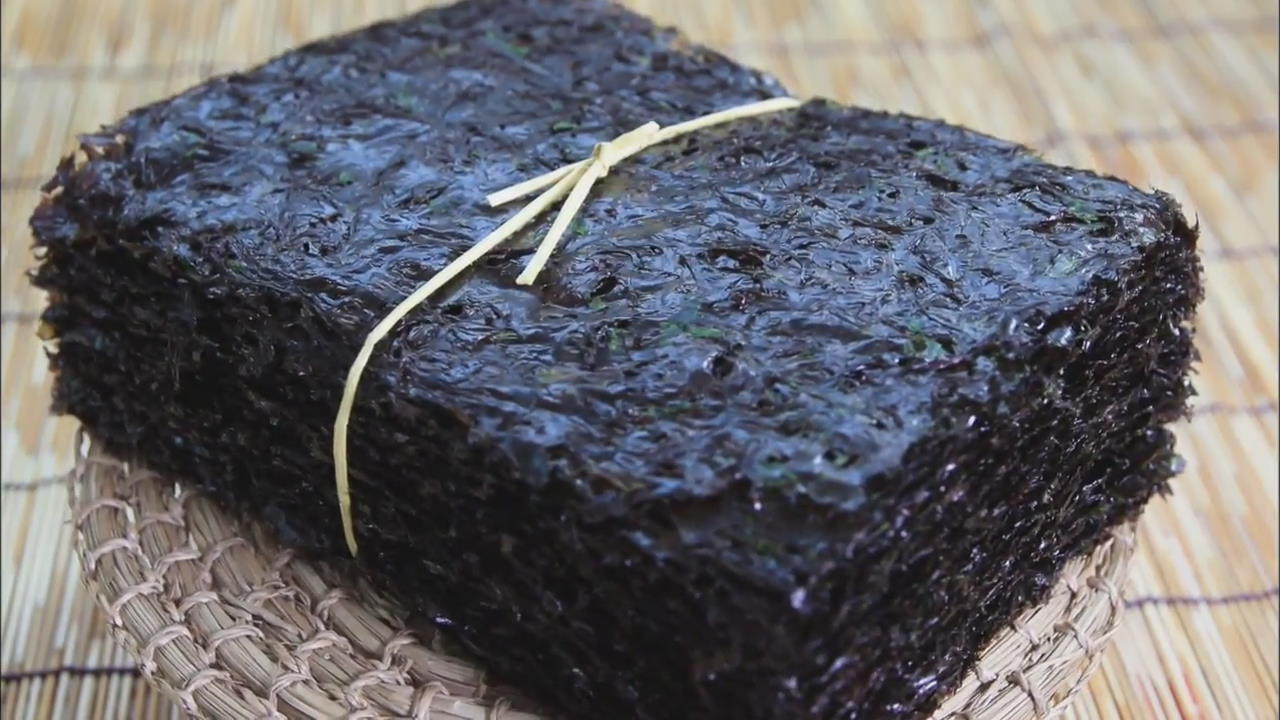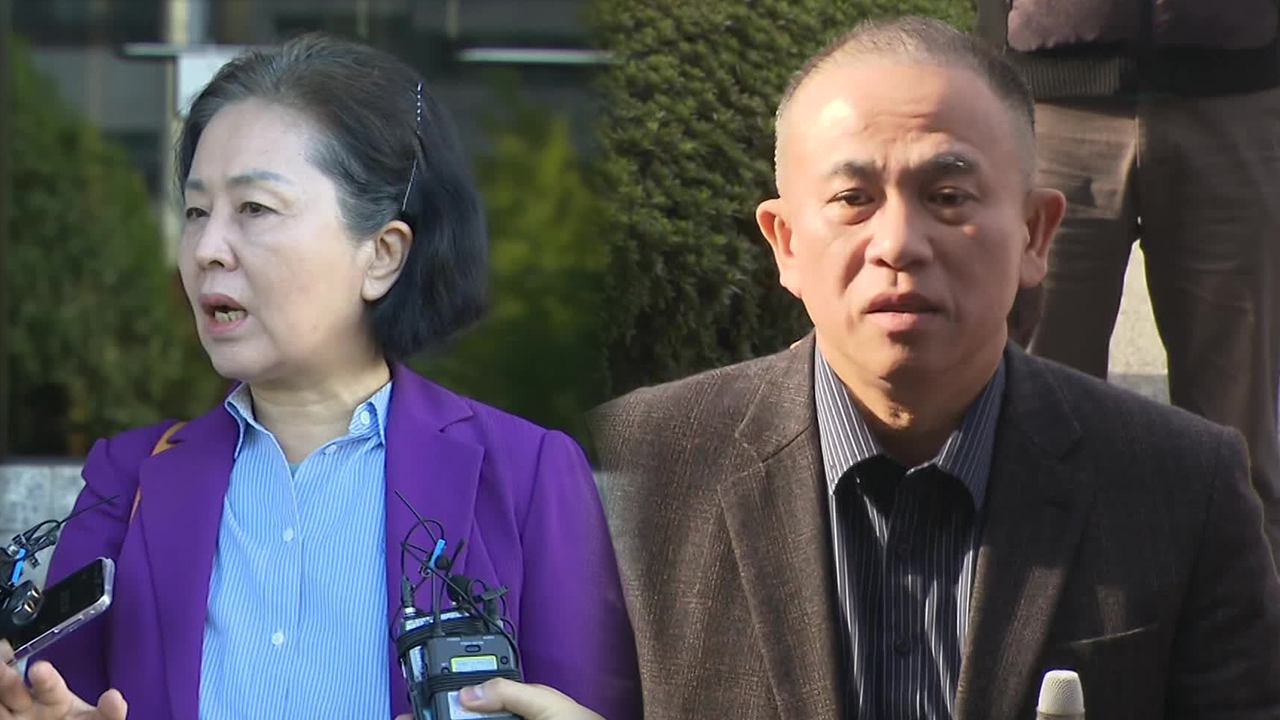Fruit Harvest
입력 2016.09.19 (14:06)
수정 2016.09.19 (14:23)
읽어주기 기능은 크롬기반의
브라우저에서만 사용하실 수 있습니다.
[Anchor Lead]
Record-high temperatures in the summer wreaked havoc on certain varieties of fruits, but created ideal conditions for cultivating subtropical fruits in Korea. Let’s take a look.
[Pkg]
Melons the size of soccer balls ripen under the sun. Their average weight reaches three kilograms, which is significantly heavier than in previous years. Their sweetness levels are also higher this year - 14 Brix. The melons are bigger and sweeter this year because the temperatures in greenhouses often soared to 48 degrees Celsius, thanks to the daytime highs of over 35 degrees Celsius last summer.
[Soundbite] Kang Chang-wan(Melon Farmer) : "The harvest is rich despite the hot weather because the fruits grew well and were resistant to pests thanks to plenty of sunshine."
The so-called "passion fruit," which originated in Brazil and is known to have a hundred scents and flavors, also grew well this year. Pineapples, which are to be harvested at the end of this month, are also expected to bring a rich harvest. Some 260 farms in Gyeongsangnam-do Province cultivate subtropical fruits on a combined area of 107 hectares. Their number has nearly doubled in just one year thanks to the lucrative nature of this business.
Subtropical fruits, which have benefited immensely from the summer heat this year, were in high demand during the Chuseok holiday, emerging as a new source of income for Korean farmers.
Record-high temperatures in the summer wreaked havoc on certain varieties of fruits, but created ideal conditions for cultivating subtropical fruits in Korea. Let’s take a look.
[Pkg]
Melons the size of soccer balls ripen under the sun. Their average weight reaches three kilograms, which is significantly heavier than in previous years. Their sweetness levels are also higher this year - 14 Brix. The melons are bigger and sweeter this year because the temperatures in greenhouses often soared to 48 degrees Celsius, thanks to the daytime highs of over 35 degrees Celsius last summer.
[Soundbite] Kang Chang-wan(Melon Farmer) : "The harvest is rich despite the hot weather because the fruits grew well and were resistant to pests thanks to plenty of sunshine."
The so-called "passion fruit," which originated in Brazil and is known to have a hundred scents and flavors, also grew well this year. Pineapples, which are to be harvested at the end of this month, are also expected to bring a rich harvest. Some 260 farms in Gyeongsangnam-do Province cultivate subtropical fruits on a combined area of 107 hectares. Their number has nearly doubled in just one year thanks to the lucrative nature of this business.
Subtropical fruits, which have benefited immensely from the summer heat this year, were in high demand during the Chuseok holiday, emerging as a new source of income for Korean farmers.
■ 제보하기
▷ 카카오톡 : 'KBS제보' 검색, 채널 추가
▷ 전화 : 02-781-1234, 4444
▷ 이메일 : kbs1234@kbs.co.kr
▷ 유튜브, 네이버, 카카오에서도 KBS뉴스를 구독해주세요!
- Fruit Harvest
-
- 입력 2016-09-19 14:07:56
- 수정2016-09-19 14:23:33

[Anchor Lead]
Record-high temperatures in the summer wreaked havoc on certain varieties of fruits, but created ideal conditions for cultivating subtropical fruits in Korea. Let’s take a look.
[Pkg]
Melons the size of soccer balls ripen under the sun. Their average weight reaches three kilograms, which is significantly heavier than in previous years. Their sweetness levels are also higher this year - 14 Brix. The melons are bigger and sweeter this year because the temperatures in greenhouses often soared to 48 degrees Celsius, thanks to the daytime highs of over 35 degrees Celsius last summer.
[Soundbite] Kang Chang-wan(Melon Farmer) : "The harvest is rich despite the hot weather because the fruits grew well and were resistant to pests thanks to plenty of sunshine."
The so-called "passion fruit," which originated in Brazil and is known to have a hundred scents and flavors, also grew well this year. Pineapples, which are to be harvested at the end of this month, are also expected to bring a rich harvest. Some 260 farms in Gyeongsangnam-do Province cultivate subtropical fruits on a combined area of 107 hectares. Their number has nearly doubled in just one year thanks to the lucrative nature of this business.
Subtropical fruits, which have benefited immensely from the summer heat this year, were in high demand during the Chuseok holiday, emerging as a new source of income for Korean farmers.
Record-high temperatures in the summer wreaked havoc on certain varieties of fruits, but created ideal conditions for cultivating subtropical fruits in Korea. Let’s take a look.
[Pkg]
Melons the size of soccer balls ripen under the sun. Their average weight reaches three kilograms, which is significantly heavier than in previous years. Their sweetness levels are also higher this year - 14 Brix. The melons are bigger and sweeter this year because the temperatures in greenhouses often soared to 48 degrees Celsius, thanks to the daytime highs of over 35 degrees Celsius last summer.
[Soundbite] Kang Chang-wan(Melon Farmer) : "The harvest is rich despite the hot weather because the fruits grew well and were resistant to pests thanks to plenty of sunshine."
The so-called "passion fruit," which originated in Brazil and is known to have a hundred scents and flavors, also grew well this year. Pineapples, which are to be harvested at the end of this month, are also expected to bring a rich harvest. Some 260 farms in Gyeongsangnam-do Province cultivate subtropical fruits on a combined area of 107 hectares. Their number has nearly doubled in just one year thanks to the lucrative nature of this business.
Subtropical fruits, which have benefited immensely from the summer heat this year, were in high demand during the Chuseok holiday, emerging as a new source of income for Korean farmers.
이 기사가 좋으셨다면
-
좋아요
0
-
응원해요
0
-
후속 원해요
0

















이 기사에 대한 의견을 남겨주세요.